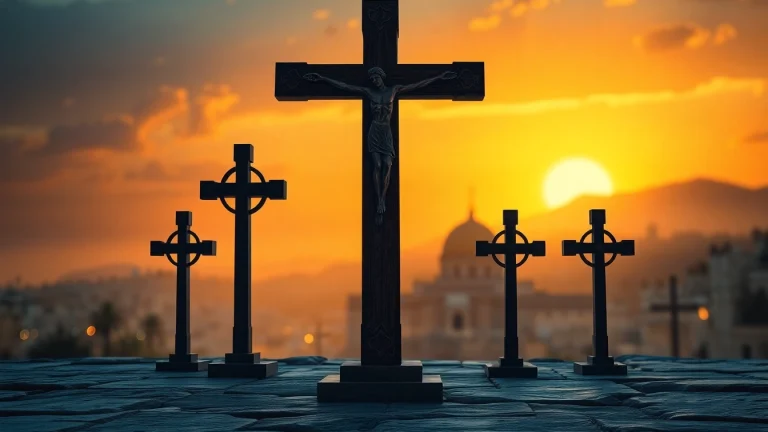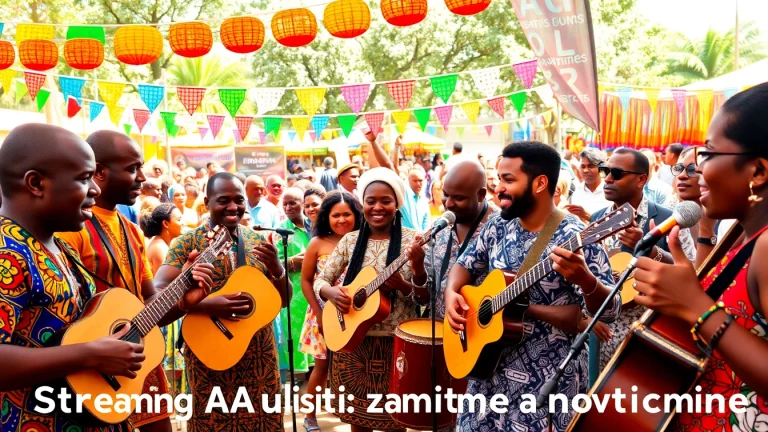
The Rich Heritage and Symbolism of Jerusalem Crosses
Understanding Jerusalem Crosses
The Jerusalem crosses are steeped in history and rich in symbolism. Often recognized for their distinctive structure, these crosses feature a large central cross surrounded by four smaller crosses, each positioned at the quadrants. The design represents the spread of Christianity and holds significance for Crusader-era history. In this article, we will explore the various dimensions of the Jerusalem crosses, including their history, design, spiritual significance, cultural impact, and where one can find them.
History and Origin of Jerusalem Crosses
The roots of the Jerusalem cross trace back to the 11th century during the time of the First Crusade. As Christian military leaders captured Jerusalem, they also adopted this emblem as a symbol of their faith and the Kingdom of Jerusalem. The large central cross represents Christ, while the four smaller crosses denote the four Evangelists—Matthew, Mark, Luke, and John—and symbolize the dissemination of the gospel throughout the world.
Historically, the Jerusalem cross has also served as a beacon for the Christian faith, drawing pilgrims and adorning religious artifacts, churches, and flags. Representations of this emblem can be found in various artworks throughout history as it intertwines with both religious and national symbolism.
Symbolic Elements of Jerusalem Crosses
The Jerusalem cross is not merely ornamental; its design is filled with rich symbolism. The central cross represents Jesus Christ, our salvation. Surrounding it, the four smaller crosses symbolize the four evangelists and the Gospel’s accessibility to all corners of the earth. This concept of spreading the Good News aligns with Christ’s Great Commission—where He commanded His followers to go forth and preach the Gospel to all nations.
Moreover, some interpretations suggest that the smaller crosses also represent the four cardinal directions—North, South, East, and West—reflecting the universal reach of Christianity. This multifaceted representation of faith combines both theological and geographical implications, highlighting the significance of Jerusalem as the epicenter of Christianity and its propagation.
Variations of Jerusalem Crosses Across Cultures
Variations of the Jerusalem cross exist across different cultures and denominations. In the Orthodox tradition, for instance, similar crosses may appear with additional embellishments, reflecting local artistry and belief systems. Similarly, the architectural designs in which Jerusalem crosses are built can reflect regional influences, adding layers to their meaning.
The Jerusalem cross has also transcended its religious origins to land in various artistic expressions—from paintings and sculptures to jewelry. Each iteration may offer a unique interpretation but often circles back to the core themes of faith, hope, and a connection to the sacred journey of Christ.
Design and Craftsmanship
Artistic Styles of Jerusalem Crosses
The artistic expression of Jerusalem crosses has evolved significantly over the centuries, influenced by various styles and cultural trends. Traditionally, they may be incised or painted onto wooden panels or woven into fabric. Today’s interpretations range from intricately carved wooden crosses to minimalistic metal designs.
In art, the Jerusalem cross’s design can embody Metalwork, textile art, sculpture, and painting. Each medium attracts different artisans, from jewelers who create intricate pendants to sculptors who construct larger pieces intended for public display or worship settings.
Materials Used in Jerusalem Crosses
Jerusalem crosses are crafted from a diverse array of materials, each chosen for its symbolic resonance and aesthetic appeal. Common materials include wood, bronze, silver, gold, and even glass. The choice of material often reflects its intended use; for instance, wooden crosses may be more common in personal or home settings, while metal crosses might be preferred for church altars.
Moreover, artisans often source these materials from the Holy Land, connecting the physical item to its spiritual heritage. Olive wood, in particular, is a favored choice due to its significance to the region and the story it tells about Jesus’s time on Earth.
Prominent Artists and Their Contributions
Throughout history, many artists have made significant contributions to the creation and representation of Jerusalem crosses. Notable artisans often emerge from specific heritage backgrounds, particularly those connected to the Christian community in Jerusalem and the surrounding regions.
Some contemporary artists continue to reinterpret the Jerusalem cross, bringing modern aesthetics to traditional designs. Their works often seek to engage both religious and secular audiences by emphasizing the cross’s universal themes while maintaining the intricate craftsmanship of previous generations.
Spiritual Significance
Religious Importance of Jerusalem Crosses
For many Christians, the Jerusalem cross holds profound spiritual significance. It embodies not just the identity of the faith but also reflects the communal and personal journeys of believers. It is considered a symbol of protection and blessing, and many wear it as a talisman of faith, while others might display it in their homes or places of worship.
Moreover, it is recognized as the symbol of the Order of the Holy Sepulchre, underscoring its importance in historical and theological contexts. This association provides a connection to the wider Christian narrative, inviting believers to engage with their faith at both individual and communal levels.
Jerusalem Crosses in Different Christian Denominations
Different Christian denominations embrace the Jerusalem cross with varying interpretations. In the Roman Catholic tradition, it resonates deeply symbolically as a representation of the church’s mission. Meanwhile, Orthodox Christians often view the cross as a reminder of the resurrection and Christ’s victory over death.
Protestant groups may adopt the Jerusalem cross in various ways, often highlighting its narrative relating to the Gospels and evangelism. Each denomination, while sharing the core elements of the symbol, may emphasize certain aspects that resonate with their values and beliefs.
Personal Meaning and Wearer Interpretation
Beyond the generalized interpretations, personal meanings attributed to the Jerusalem cross can vary widely among individuals. For some, it may represent a connection to their heritage, particularly for those with familial roots in Holy Land traditions. For others, it might be a constant reminder of their faith journey and commitment to spreading the Gospel.
People across cultures might choose to wear or display the Jerusalem cross as a means of personal expression, allowing it to serve as a conversation starter about faith, history, and the rich tapestry of traditions surrounding the Christian faith.
Jerusalem Crosses in Modern Culture
Contemporary Art Depictions of Jerusalem Crosses
As with many historical symbols, contemporary artists have found inspiration in the Jerusalem cross, reinterpreting it through modern lenses. One can see its depiction across various art forms—brilliantly rendered in paintings, featured prominently in sculptures, or integrated into textile arts.
Artists use the Jerusalem cross to comment on issues of faith, identity, and spirituality, often merging traditional and modern techniques. These works may find places in galleries, exhibitions, or public installations, inviting viewers to engage with the cross’s historical and modern significance.
Representation in Jewelry and Fashion
In recent years, the Jerusalem cross has gained traction in jewelry and fashion, with many designers incorporating it into pendant necklaces, bracelets, and other accessories. This resurgence reflects a growing trend of integrating faith-oriented symbols into everyday attire as an expression of personal belief and identity.
Jewelry artisans often craft pieces that emphasize the craftsmanship of Jerusalem crosses, attracting both those with religious sentiment and individuals interested in unique, culture-rich designs. By blending aesthetics with significance, these pieces hold dual meanings: one of faith and another of artistic creativity.
Cultural Events Celebrating Jerusalem Crosses
Various cultural events celebrate the Jerusalem cross and its historical legacy. Festivals may take place in which the cross serves as a focal point for commemorating the Christian faith and heritage. Such events might include exhibitions, performances, and workshops focused on religious art and symbolism.
Moreover, religious communities often come together during important liturgical occasions to display the Jerusalem cross as part of their rituals. Its presence reinforces the interconnectedness of community and faith, fostering moments of reflection and inspiration among participants.
Where to Find Jerusalem Crosses
Art Galleries and Exhibitions Featuring Jerusalem Crosses
Many art galleries and exhibitions worldwide feature Jerusalem crosses, especially those focusing on religious art. Visiting these exhibitions allows individuals to encounter the cross in a range of artistic interpretations and historical contexts, enhancing their appreciation for its aesthetic and spiritual dimensions.
Some exhibitions may also include workshops or talks from curators and artisans, offering deeper insights into the techniques and symbols resonant in various art forms related to the Jerusalem crosses.
Online Shops for Purchasing Jerusalem Crosses
For those interested in acquiring Jerusalem crosses, numerous online shops offer a wide selection, from handmade artisan pieces to mass-produced varieties. When choosing to purchase online, it’s beneficial to explore shops that focus on quality craftsmanship and authentic materials sourced from relevant regions.
Customers can find various styles, ranging from traditional to contemporary interpretations of the Jerusalem cross, ensuring that there are options suited to diverse tastes and preferences.
Community Groups and Forums Discussing Jerusalem Crosses
Online communities and forums often engage in discussions surrounding Jerusalem crosses, sharing personal stories, insights, and art. These platforms enable individuals to delve deeper into the symbolism, craftsmanship, and history associated with the crosses.
Participation in these groups can provide valuable resources and connections to artisans and historians passionate about the Jerusalem crosses, enriching one’s understanding and appreciation of the topic.


